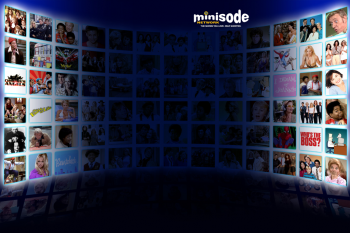Freeing the Thirty Minute Sit-Com
by: Ray Cha / Independent Scholar
Although video on demand has been predicted, discussed, lamented and attempted for years, services are finally being deployed and accessed on a large scale. Not surprisingly, we are beginning to see effects that were unanticipated. Much as been discussed about YouTube, from its sale for US$1.65 billion to copy right suits. While these are important events for obvious reasons, we are also seeing a radical change that YouTube has encouraged and less widely discussed. Other forms of VOD services, from the broadcast network and cable services, as well as, the rise in popularity of Netflix, television series DVDs and bit-torrent (which have some VOD-like features) are also influencing how we watch television. However because YouTube has the low barrier for watching, its sheer volume of video delivered allows us to see the changes in production and viewing behavior first. In that, YouTube and these other means of watching television is freeing of the constraints of traditional programming and distribution. These changes allow for new means of control and access.
Video on demand is liberating the form of television from traditional program structures. A television program can now be created to match the idea, whether it is a 60 second idea, a 120 minute idea or a five season idea. Being freed from the constraints of typical half hours segments and twenty-two episode seasons offer benefits for those behind the screen as well as in front of the screen. To be fair, HBO has also experimented with the number of episodes per season and the timing of new episodes, because they are free from the usual advertising selling and buying cycle. Previous shows such as the Sopranos and Sex and the City, had limited episodes a season, which were released off the typical autumn schedule.
As more of my personal television watching follows a trend of switching from traditional sets to the computer, an entire approach to viewing is changing. Watching television tends to occur in batches of episodes, through services such as abc.com. The sweet spot is about 90 minutes to two hours, which translates into about three half hour episodes or two hour long episodes. Now, instead of trying (and failing) to watch a single weekly episode, I watch a few episodes of Grey’s Anatomy to catch up on a series, which I have not watched in a few years. Interestingly, having access to multiple shows encourages shows with shifting casts and complicated story lines. Where before I might not have bothered watching a show because there are too many new characters and plot lines, I and other viewers have the opportunity to get up to speed, which is much harder in single weekly episodes.
Similarly, I constantly hear people say that they discovered “24” years into the series. They report watching an entire season on DVD over one weekend. Likewise, Tivo and competing DVR services allow for the extended viewing sessions as well.
Of course, content is still the key to everything. To that point, the just launched Minisodes offers an interesting case. For the uninitiated, Minisodes is a joint venture between Sony and MySpace, and provides episodes of classic and failed sitcoms, such as “Facts of Life” and “What’s Happening” which have been edited down to three to five minute clips and can be viewed via the Internet. If people are critical of the dumbing down of content on YouTube, they are most certainly going to cringe at Minisodes. However, is the site initial buzz solely based on the fact that episodes are shortened? How many people would watch the entire episode because, they enjoy (free) lost television from their youth or so bad it’s good failed shows? In other words, it isn’t clear yet that people are more interested in control and access than on short clips.

With an audience used to short video clips, sustained viewing will demand higher quality. Today, people absorb a constant stream of media in ways that would be unimaginable to be people at the mass spreading of televisions in the 1950s. The popularity of sharing short clips on YouTube at the office obviously limits how long the videos will be. With new distribution services, television producers and viewers will both benefit from increases in control and access. Creators will be able to fit the form and length to their idea. Some shows may be only worth one season, in which case, straight to DVD or streamed delivery may make more sense than being shown on major networks who look for multi-season hits. Future episodic television may have varying episode lengths and occasional production schedules, dictated by creative rather than institutional decisions.

Although, these traditions are by nature difficult to change. The upcoming series, Caveman is a good example. The original Geico commercials with cavemen interacting in the modern world to sell insurance were mildly amusing. I will be shocked if this concept will successfully expand to an entire television series, but one never knows. Regardless of its success or failure, it reveals how that the television industry still thinking in terms of 30 second advertising clips and 30 minute programming segments. Granted that there are complicated systems in places that rely on these structures, such as advertising which was previously mentioned. It is a promising sign to see that, even if traditional broadcasters are still tied to older programming formats, they are finally experimenting with new delivery methods, such as VOD. The hope, then, is that new content format will follow.
Image Credits:
1. From Myspace’s Minisode Website
Please feel free to comment.
This is quite interesting as I had just had an extensive conversation with a friend of mine about how frustrating the lack of short, non-serialized sitcoms and other programs has been. He and I both want to, on occasion, tune in to the television and be able to catch a show that requires no prior knowledge of the characters on the show or the plot currently unfolding.
Getting involved with even one show like “24” or “Desperate Housewives” seems like a very substantial commitment; I’d likely watch more television if I could click into something for a set period of time then tune out. Given my current life, I don’t have the time to follow complex plots, and I don’t want to have to get to know the characters.
Thanks for the intriguing column!
I just watched a few Minisode shorts and I found myself more inclined to spend a few minutes with these videos than I would had I come across these same programs in their full form on, say, Nick at Nite or TV Land.
I’m not sure what, if any, long-lasting impacts the Minisodes will have, but I imagine that with the growing number of media players hitting the market — like the iPhone and its competitors — programs of *widely* varying lengths (and not just 30-min sitcoms) might be reedited and reformatted to fit these pocket-sized screens, as TV on DVD becomes TV on-the-go.
The notion that an audience accustomed to shorter, intense clips will thus demand higher quality in longer programs is interesting, and perhaps connects to an overall shift towards audiences recognizing and seeking out better-quality programming. Specifically, I wonder if services such as Netflix which allow the user relatively unfettered access to a wide variety of films have made audiences less inclined to go see this week’s newest pablum at the multiplex. Will putting TV on the internet at the user’s demand also cause more people to turn from one glowing box to another? Does increased choice cause people to make “better” decisions?
Perhaps it is the repetition of the act of choosing, rather than simply a wider variety of content, that will result in a raising of average standards in terms of what an audience deems interesting, or at least worth watching. The nature of episodes on the internet completely radicalizes Raymond Williams’ notion of flow, as each online episode ends and the viewer is forced to select again, rather than continue mindlessly onto the next program.
It will be interesting to see how this change plays out.